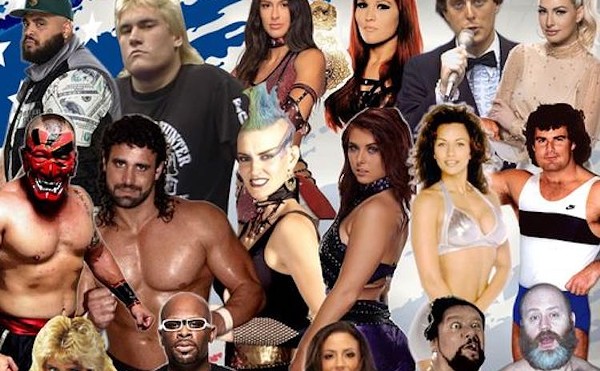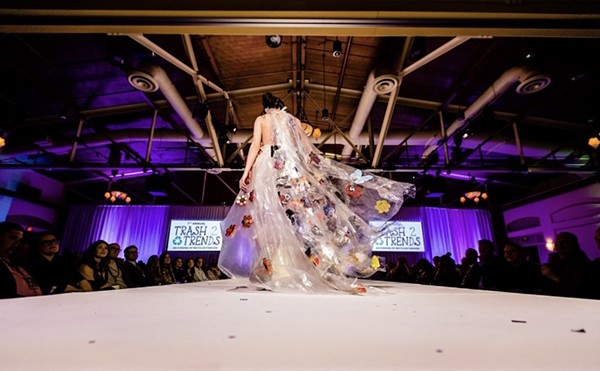A March 4 article in the Orlando Sentinel examined the high rate of injuries suffered by Disney's character performers, and gave Mouse management a platform to tout safety improvements made to their signature cartoon costumes. While largely well-researched, Beth Kassab's piece missed the real story: After decades of development, Disney recently introduced new technology that will fundamentally change the nature of how these animated icons are portrayed.
Since the early days of Disneyland, costumed characters have been an integral part of the theme-park experience. Whether in shows, parades or meet-and-greets, the opportunity to see a larger-than-life three-dimensional depiction of one's favorite cartoon rodent has evolved into an important touchstone of childhood. Over the years, these fur and fiberglass renderings of Mickey and Co. have evolved from crudely constructed caricatures to the smoothly sculpted faces we are all familiar with today. But one thing over the years has remained static — their facial expressions. With fixed, wide eyes and frozen, gaping grins, Disney's costumes have always relied on the broad pantomime of the actors within to give them life. Always until now, that is.
As reported by industry historian Jim Hill (jimhillmedia.com), attempts to make the character costumes more expressive date back to the 1960s, when the Imagineers tried unsuccessfully to use hidden reel-to-reel tape recorders to make Brer Bear "talk." For the last decade, repeated efforts were made to incorporate the animatronic technology that brings to life the ride-bound Pirates and Presidents into the walk-around characters. Some progress was made in the 1990s, such as a talking Kermit costume used in the short-lived "Here Come the Muppets" show. The delicate nature of these prototypes mostly limited their use to special events, such as Walt Disney World's 25th Anniversary Gala, and kept them out of the parks for day-to-day service.
Then, last year, Kenneth Feld Entertainment decided to spend the dollars necessary to introduce the largest-scale test yet of this technology as a centerpiece for their traveling "Mickey's Magic Show." After that success, in January the new costumes began to be folded into the "Dream Along With Mickey" show, a harmless musical diversion at the Magic Kingdom that replaced the soul-destroying Cinderellabration debacle in 2006. As of a few weeks ago, they are in daily employ in the show staged in front of Cinderella's Castle, making this the largest-scale in-park use of this advancement.
The end result is nothing less than transformative: Mickey, Minnie, Goofy and Donald can now blink their eyes and move their lips (or bills) in a simulacrum of life that is downright eerie. No longer must the actors vigorously shake their oversized heads to indicate when they are talking. Instead, their mouths can articulate in striking synchronization with a pre-recorded soundtrack. Combined with animated eyelids that can blink, squint or open wide, the familiar characters take on a lifelike quality that is both compelling and chilling in an "uncanny-valley" sort of way.
The initial reaction from the Disney fan community has been overwhelmingly positive. "Great to see such great technology being put into the parks," "It was just seamless and incredible to watch" and "Of all the innovations in the last five years, this is probably my favorite" are typical of comments found on Internet forums like WDWMagic.com. (They are certainly better-received than the clunky rubber cowl worn by the new Captain Hook "face" character.)
Some concerns have been raised that the new technology reduces the role of the performer, forcing them to be more static while letting the animatronics do the acting. Such criticism might be valid if the movements were computer-controlled, or wirelessly synchronized to the audio track without need for actor intervention. That may be the case in the future, but for now they are controlled "on the fly" by the performers, who have triggers wired into the fingers of their gloves. Only a subtle twitching of their bulbous middle fingers betrays the manipulations required to activate the effect. This kind of puppetry is arguably more challenging to perform than the old- fashioned head-shaking and is another reason to respect the unsung artists inside the stifling suits.
There are unanswered questions about this innovation and the additional burdens (physical and artistic) that it places on the performers. How much extra weight and heat do the new heads subject the performers? And is it counterbalanced by the reduction in violent neck motions required to animate them? There's no data to answer those questions. Disney is tight-lipped about their future plans for this technology, and the majority of characters roaming the parks will likely be as expressionless as ever for years to come. But assuming the continued success of this experiment, the next generation of children may grow up never knowing the peculiar pleasure of meeting a monstrous mouse with lockjaw.
[email protected]














